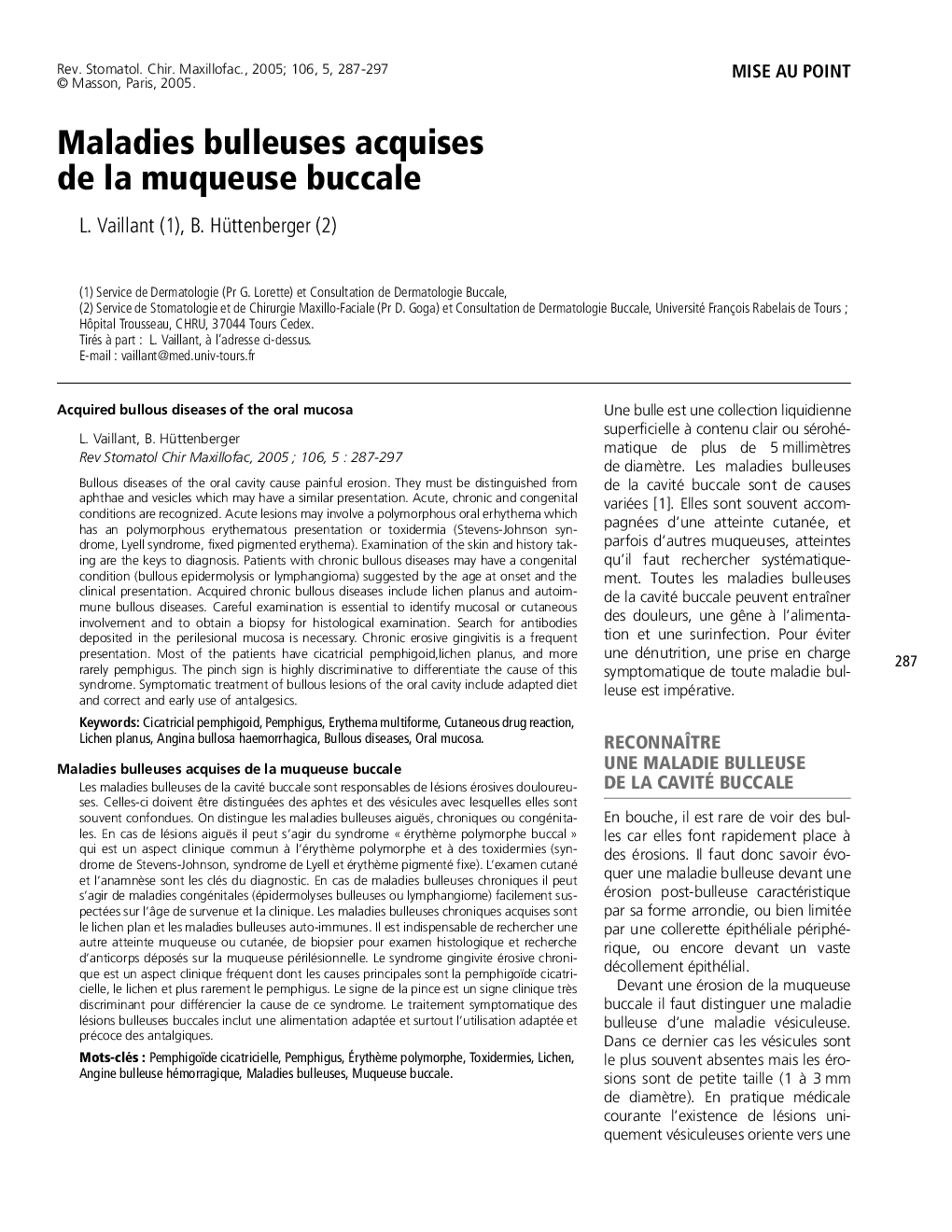| Article ID | Journal | Published Year | Pages | File Type |
|---|---|---|---|---|
| 9220075 | Revue de Stomatologie et de Chirurgie Maxillo-faciale | 2005 | 11 Pages |
Abstract
Bullous diseases of the oral cavity cause painful erosion. They must be distinguished from aphthae and vesicles which may have a similar presentation. Acute, chronic and congenital conditions are recognized. Acute lesions may involve a polymorphous oral erhythema which has an polymorphous erythematous presentation or toxidermia (Stevens-Johnson syndrome, Lyell syndrome, fixed pigmented erythema). Examination of the skin and history taking are the keys to diagnosis. Patients with chronic bullous diseases may have a congenital condition (bullous epidermolysis or lymphangioma) suggested by the age at onset and the clinical presentation. Acquired chronic bullous diseases include lichen planus and autoimmune bullous diseases. Careful examination is essential to identify mucosal or cutaneous involvement and to obtain a biopsy for histological examination. Search for antibodies deposited in the perilesional mucosa is necessary. Chronic erosive gingivitis is a frequent presentation. Most of the patients have cicatricial pemphigoid, lichen planus, and more rarely pemphigus. The pinch sign is highly discriminative to differentiate the cause of this syndrome. Symptomatic treatment of bullous lesions of the oral cavity include adapted diet and correct and early use of antalgesics.
Keywords
Related Topics
Health Sciences
Medicine and Dentistry
Dentistry, Oral Surgery and Medicine
Authors
L. Vaillant, B. Hüttenberger,
